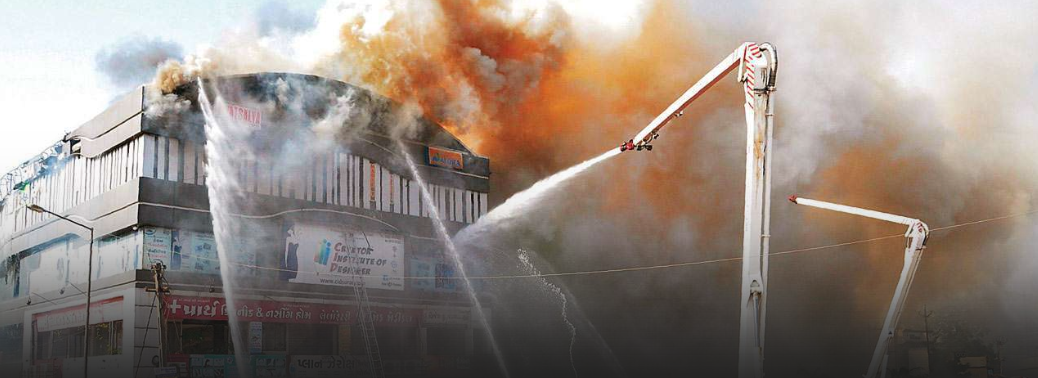SURAT BUILDING FIRE: GUJARAT MOVES TO ENFORCE FIRE SAFETY IN BUILDINGS
27, May 2019

Prelims level : Environment
Mains level : Technology, Economic Development, Bio diversity, Environment, Security and Disaster Management
Why in News:
- Shaken out of apathy by the devastating fire at an illegal structure in Surat that claimed the life of 22 students, the Gujarat government asked builders to equip themselves with fire safety installations within three days or face closure.
Details:
- At least 50 properties in Surat had been sealed for violations of fire safety norms.
- As many as 1,123 properties in the city have been issued notices for not adhering to fire safety norms. As many as 22 students studying at an arts coaching in Surat’s Sarthana area lost their lives in the huge fire. The building did not have a no-objection certificate from the Fire Department
Fire safety:
- India’s abysmal record on fire safety is reflected in the death of 17,700 people countrywide in fires in both public and residential buildings during 2015, according to the latest available data from the National Crime Records Bureau. High -profile cases such as the Uphaar cinema blaze in Delhi that killed 59 people in 1997, and the Kumbakonam school fire in Tamil Nadu in 2004 in which 94 children perished shock the nation, but even these are not strong enough to persuade governments to make fire safety the priority it should be. It is essential for the judiciary to send out the message that there will be no tolerance to corruption and evasion in the enforcement of building rules and fire safety. Beyond suspending a few officials and filing cases against the building owners, there is a need to make an example of sanctioning and enforcement authorities. The unwavering message must be that Indians demand accountability. Mandating compulsory insurance for all public buildings against fire risk and public liability can bring about a change to the way architects and builders approach the question of safety, since the insurer would require a reduction of risk and compliance with building plans.







